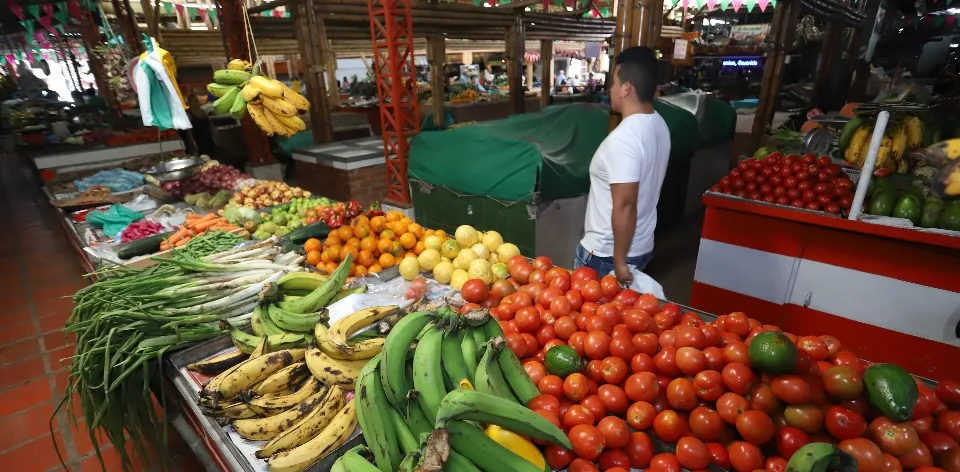PRESS ROOM
 20/2/2024
20/2/2024
Food supply increased by 11% during December 2023

Highlighting growth in grains, cereals, processed foods, fruits, and vegetables.
Sincelejo, Tunja, and Medellín showed the highest increases, for example. On the other hand, some regions faced challenges such as a decrease in the supply of fish.
Bogotá D.C., (@Minagricultura, @UPRAColombia, @claudialili76). The Rural Agricultural Planning Unit (UPRA) released the bulletin on the supply of agricultural products and food security for December 2023, which revealed an 11% increase in the food supply in the country's main marketplaces compared to the same period the previous year. This increase, totaling 576,901 tons of food entering the country's main wholesale centers, reflects the continuous commitment of the agricultural sector to national food security.

"The significant increase in food supply during the month of December underscores the unwavering commitment of the Colombian agricultural sector to strengthen the food security of our nation. This achievement is the result of the work and efficiency of our producers, who demonstrate their dedication and resilience in the production and distribution of essential food for all Colombians on a daily basis", stated Claudia Cortés, UPRA Director.
The bulletin, developed with data from the Information System for Prices and Supply of the Agricultural Sector (SIPSA) and the National Administrative Department of Statistics (DANE), showed a 31.6% increase in the supply of grains and cereals. This increase suggests greater availability of basic foods such as rice, corn, and wheat, which are fundamental in the Colombian diet.
Processed foods also experienced a significant increase: 28.4%. This increase may reflect both higher domestic production and an increase in imports of processed products. Similarly, dairy and eggs recorded a growth of 12.9%, indicating a positive trend in the production and distribution of these staple products in the Colombian diet.
Processed foods also experienced a significant increase: 28.4%. This increase may reflect both higher domestic production and an increase in imports of processed products. Similarly, dairy and eggs recorded a growth of 12.9%, indicating a positive trend in the production and distribution of these staple products in the Colombian diet.
The supply of fruits increased by 10.2%, with a total intake of 129,099 tons of fruits in December 2023; notable increases were observed in products such as tamarillo (31.8%), lulo (28.5%), and papaya (27.4%). However, decreases were recorded in the supply of pineapple (-21.1%) and mandarin (-10.4%). The majority of fruits entering Bogotá's main wholesale markets came mainly from the departments of Meta (22.6%), Cundinamarca (19.4%), and Santander (10.9%).

In the case of vegetables, the increase was 6.7%. The supply increased for cucumber (36.3%), onion (20.3%), bell pepper (13.9%), tomato (10.8%), corn (10.6%), other vegetables (8.8%), carrot (7%), garlic (6.7%), lettuce (6.3%), and cilantro (1.1%). The supply decreased for beans (-14%), green peas (-13.2%), squash (-12%), string beans (-5%), green onion (-4.2%), and cabbage (-0.3%).
With 172,772 tons entered in December 2023, tubers, roots, and plantains experienced a widespread increase, with notable growth in plantains (34.2%), ulluco (16.4%), and cassava (9.9%). However, decreases were observed in products such as ginger (-48.9%) and yam (-44.1%).
However, not all food groups experienced an increase in supply: fish recorded a significant decrease of 10.9%, and meats decreased by -3.9%. These trends could be attributed to various factors, including fluctuating consumption patterns and adverse weather conditions affecting fishing and livestock breeding.
Finally, the bulletin showed that food supply varied significantly in cities where the main wholesale markets are located. Notable increases were observed in cities such as Sincelejo (108.4%), Tunja (70.3%), and Medellín (69.2%), while cities like Pasto (-29.1%) and Ibagué (-11.8%) experienced decreases.
Check the bulletin here.

